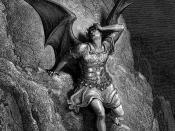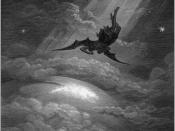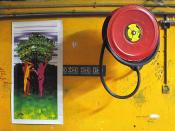Evil is one of the deepest and most central aspects in human existence, a problem that every individual and every age must face for itself. Different cultures, religions and societies have used various Arts to portray their interpretation what is 'evil' and what is the true archetype of evil. Early depiction of evil was entirely based on verbal mythology where it is told gods banished those that are evil i.e. mythical wicked beast. Later on, the written documentation of the Old Testament and The Genesis (New Testament) showed how evil, resulted from Adam & Eve's disobedience toward God, came to be and what it means to be evil (i.e. to oppose god). The portrayal of evil took a different turn in Milton's epic recount 'Paradise Lost' (first published in 1667). Instead of embarking the stereotypical way (e.g. in cultures/religions), Milton took another approach by not intentionally glorifying Satan and in doing so, he created a different idea, an emerging concept and a new meaning to the word 'evil'.
Soon new ways of portraying evil emerged and in the Elizabethan era Mary Shelly created the first ever science fiction novel that challenged the basis of evil in religion and culture. By giving the monster in the novel a different aspect of 'evil', she effectively portrayed the monster not as a 'monster' but of more of a misunderstood villain whom the audience can sympathize and possibly empathize with. Shakespeare's tragic play Othello created a villain that is 'pure evil', a character so wicked and sick yet tricky and intelligent, a character where the audiences are meant to loathe him. Modern psychology also explained how "evil" is portrayed in modern rational world and early films/books also challenged religion and cultures. These early archetypes of 'evil' became the basis for our modern social, political...


